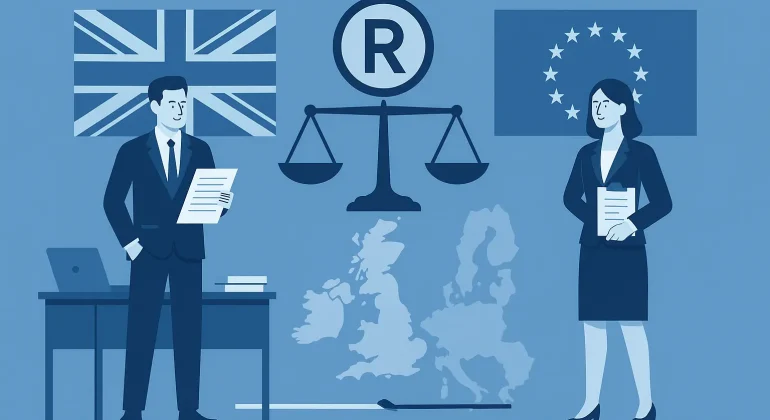The UK’s departure from the European Union has significantly altered the landscape of trademark protection and enforcement. Businesses must now navigate a bifurcated system where EU trademarks (EUTMs) no longer extend protection to the UK, and vice versa. This article aims to provide a comprehensive overview of the current state of UK trademark use derived from EU trademark registrations, highlighting key considerations for rights holders operating across these jurisdictions.
Sommaire
Understanding the post-Brexit trademark landscape
Separation of jurisdictions
As of January 1, 2021, EUTMs no longer confer protection within the UK. To mitigate the impact on rights holders, the UK Intellectual Property Office (UKIPO) automatically created comparable UK trademarks for all existing EUTMs. These comparable rights retain the original filing and priority dates of the corresponding EUTMs but are now subject to UK law and jurisdiction.
Scope of protection
The separation means that EUTMs cover only the remaining EU member states, while UK trademarks (including comparable UK rights) cover only the UK. Therefore, businesses seeking comprehensive protection across both regions must maintain separate registrations.
Use requirements for EUTMs and UK trademarks
Genuine use pre-Brexit
For both EUTMs and comparable UK trademarks, use of the mark in the UK prior to January 1, 2021, is considered valid for demonstrating genuine use within the respective territories. This means that pre-Brexit use in the UK can support the validity of an EUTM and vice versa.
Genuine use post-Brexit
Post-Brexit, the requirements diverge:
- EUTMs: Use of the mark must occur within the EU member states to maintain the registration. Use solely in the UK after January 1, 2021, does not suffice.
- UK trademarks: Use of the mark must occur within the UK. Use solely within the EU post-Brexit is insufficient to demonstrate genuine use in the UK.
Implications for trademark enforcement and strategy
Risk of revocation
Failure to demonstrate genuine use within the appropriate jurisdiction can lead to revocation of the trademark. For instance, a comparable UK trademark not used in the UK within a continuous five-year period post-Brexit is vulnerable to cancellation.
Strategic considerations
Businesses must reassess their trademark portfolios to ensure that they have adequate protection in both the UK and EU. This may involve:
- Filing new applications in the UK or EU to cover gaps in protection.
- Monitoring use of marks to ensure compliance with genuine use requirements.
- Adjusting enforcement strategies to account for the separate jurisdictions.
Best practices for rights holders
To navigate the post-Brexit trademark environment effectively, rights holders should:
- Audit existing portfolios: Review current registrations to identify any vulnerabilities due to lack of use in the appropriate jurisdiction.
- Maintain separate registrations: Ensure that trademarks are registered separately in the UK and EU to maintain protection across both regions.
- Monitor use: Keep detailed records of where and how trademarks are used to support claims of genuine use.
- Seek professional advice: Consult with trademark attorneys to develop strategies tailored to the business’s specific needs and markets.
Conclusion
The divergence of UK and EU trademark systems post-Brexit necessitates a proactive approach to trademark management. Rights holders must ensure that they have appropriate registrations and can demonstrate genuine use within each jurisdiction to maintain and enforce their trademark rights effectively.
Dreyfus Law Firm specializes in intellectual property law and offers comprehensive services to assist businesses in navigating the complexities of trademark protection in the UK and EU. We are partnered with a global network of attorneys specializing in intellectual property to provide our clients with seamless support across jurisdictions.
Dreyfus Law Firm is partnered with a global network of attorneys specializing in intellectual property law.
Join us on social media !
FAQ
Does my EUTM still protect my trademark in the UK?
No, as of January 1, 2021, EUTMs no longer provide protection in the UK. However, the UKIPO has created comparable UK trademarks for existing EUTMs to maintain protection within the UK.
Can I rely on use of my trademark in the UK to maintain my EUTM?
Only if the use occurred before January 1, 2021. Post-Brexit use in the UK does not count towards maintaining an EUTM.
What constitutes genuine use of a trademark?
Genuine use involves actual use of the trademark in the market for the goods or services for which it is registered. This includes sales, advertising, and other commercial activities demonstrating the mark's presence in the market.

